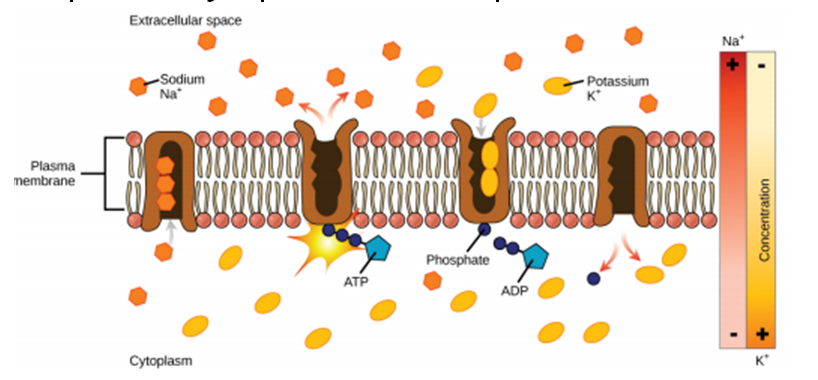The process by which homologous chromosomes exchange genetic material
a)is crossing over.
b)is random fertilization.
c)occurs only in bacteria.
d)occurs only in animals.
e)is independent assortment.
a)is crossing over.
You might also like to view...
Through studies of insect Malpighian tubules, researchers found that K+ accumulated on the inner face of the tubule, against its concentration gradient. What can you infer about the mechanism of transport?
A) Potassium transport is a passive process. B) Movement of potassium into the lumen of the Malpighian tubules is an energy-requiring process. C) Potassium moves out of the tubules at a faster rate than it moves into the lumen of the tubules. D) Sodium ions will follow potassium ions.
In the illustration below, would the sodium-potassium pump be categorized as a uniporter, symporter, or antiporter?

a. uniporter
b. symporter
c. antiporter
d. none of these
Early Greek philosophers failed to exploit one of the greatest advantages of methodological naturalism, which is:
a. Explanations can be tested through observation and sometimes manipulation. b. Explanations can shift from supernatural to natural. c. Explanations can be based on fixed laws of nature. d. All of the above. e. B and C.
What is the route a red blood cell would take to circulate through a kidney, starting from the aorta?
A. renal artery ? afferent arteriole ? glomerulus ? efferent arteriole ? vasa recta ? renal vein B. renal vein ? efferent arteriole ? glomerulus ? afferent arteriole ? vasa recta ? renal artery C. renal artery ? afferent arteriole ? vasa recta ? efferent arteriole ? glomerulus ? renal vein D. renal artery ? vasa recta ? afferent arteriole ? efferent arteriole ? glomerulus ? renal vein E. renal artery ? glomerulus ? afferent arteriole ? efferent arteriole ? vasa recta ? renal vein F. renal vein ? glomerulus ? efferent arteriole ? afferent arteriole ? vasa recta ? renal artery G. renal vein ? vasa recta ? afferent arteriole ? glomerulus ? efferent arteriole ? renal artery